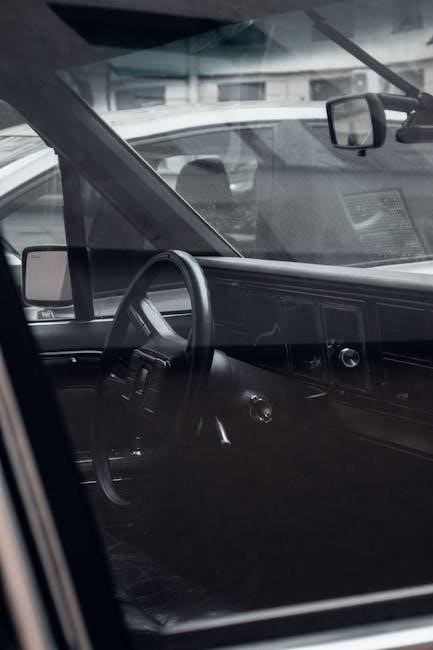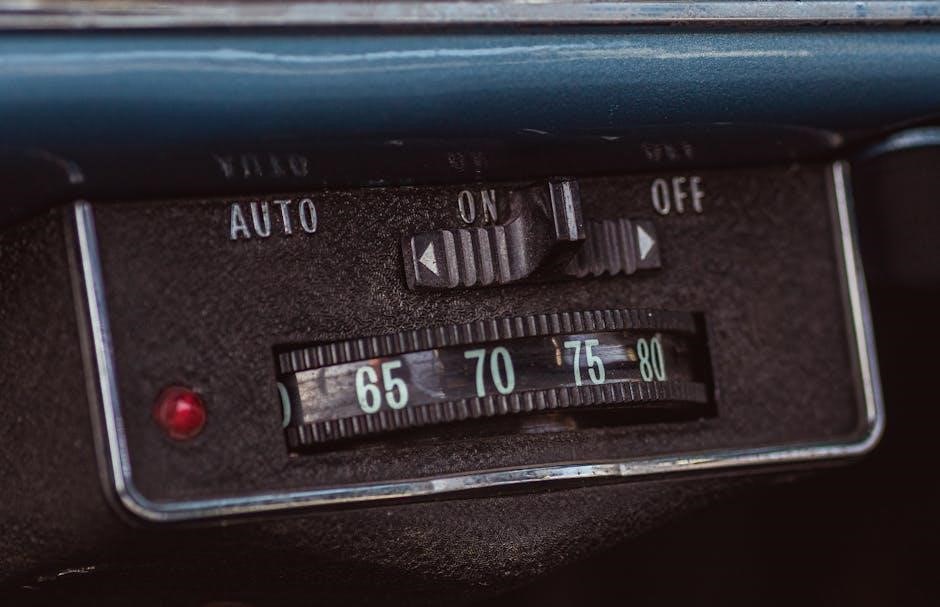Evenflo Car Seat Instruction Manual: A Comprehensive Guide
Welcome to your comprehensive guide to Evenflo car seat instruction manuals! These manuals are essential for the safe installation and use of your Evenflo car seat, ensuring your child’s safety. They provide detailed steps, safety warnings, and important information regarding your specific model.
Evenflo has a long-standing reputation for producing high-quality, safe, and user-friendly car seats. As a leading brand in child safety, Evenflo offers a diverse range of car seats designed to accommodate children of all ages and sizes, from infants to older kids transitioning to booster seats. Each car seat is engineered with advanced safety features and rigorously tested to meet or exceed federal safety standards.
Understanding the importance of proper car seat usage, Evenflo provides detailed instruction manuals with each product. These manuals serve as a crucial resource for parents and caregivers, offering step-by-step guidance on installation, harness adjustment, and general usage. By carefully following the instructions in the manual, you can ensure that your Evenflo car seat is correctly installed and that your child is properly secured, maximizing their safety in the event of a collision.
These manuals are not just guides; they’re your partner in providing the safest environment for your child during travel. Remember, a correctly installed car seat is a child’s best defense in a vehicle.
Understanding Your Evenflo Car Seat Model
Before diving into the installation or usage of your Evenflo car seat, it’s crucial to identify and understand the specific model you own. Evenflo offers a wide array of car seat models, each designed with unique features and specifications to cater to different needs and age groups. Locate the model number and manufacturing date, typically found on a label affixed to the car seat’s shell.
This information is vital for accessing the correct instruction manual, which is tailored to your specific model. Using the wrong manual can lead to improper installation or incorrect usage, potentially compromising your child’s safety. Once you have the model information, you can easily find the corresponding manual on the Evenflo website or through customer service.
Familiarize yourself with the car seat’s components, such as the harness system, recline features, and LATCH connectors. Understanding how these elements work is essential for proper adjustment and secure installation. Each Evenflo model has unique characteristics; knowing yours is the first step towards guaranteeing your child’s well-being on every journey. Take the time to explore these features in your specific user manual.
Safety Warnings and Precautions
Prioritizing your child’s safety is paramount when using any car seat. Evenflo car seats come with specific safety warnings and precautions that must be carefully followed to minimize the risk of injury in the event of a crash. Always read the instruction manual thoroughly before installing or using the car seat. Pay close attention to weight and height limits for each mode, whether rear-facing or forward-facing, as exceeding these limits can compromise the car seat’s effectiveness.
Never leave your child unattended in a car seat, and ensure that the harness is properly adjusted and snug. Avoid using the car seat if it has been involved in a crash, even if there is no visible damage. Car seats are designed for single-use in the event of a collision, and their structural integrity may be compromised afterward. Be aware of expiration dates, typically six years after the manufacturing date (eight years for some models), as materials degrade over time.
Never modify the car seat or use aftermarket accessories, as these can interfere with its safety performance. Always consult your vehicle’s owner’s manual for proper car seat installation instructions. Following these safety warnings and precautions diligently will significantly enhance your child’s safety while traveling.
Installation Guide: Rear-Facing
Installing your Evenflo car seat in the rear-facing position is crucial for infants and young toddlers. This position provides the best protection for their developing necks and spines. Begin by consulting both your Evenflo car seat manual and your vehicle’s owner’s manual to identify the appropriate rear-facing installation method for your car and the specific car seat model.
You can use either the LATCH system or the vehicle’s seat belt to secure the car seat. When using LATCH, ensure the connectors are firmly attached to the lower anchors in your vehicle. If using the seat belt, thread it through the correct belt path as indicated in the car seat manual, ensuring a tight and secure fit. It is vital to eliminate any slack in the seat belt before locking it. A locking clip may be necessary for older vehicles without locking retractors.
Check the recline angle of the car seat to ensure it is correct for your child’s age and weight, usually indicated by a level indicator on the car seat. Ensure the car seat is firmly installed and does not move more than one inch in any direction when tested at the belt path. Regularly check the installation to maintain optimal safety as part of your routine.
Installation Guide: Forward-Facing
Transitioning to forward-facing installation with your Evenflo car seat requires careful attention to safety guidelines. Before switching, ensure your child meets the car seat’s weight and height requirements for forward-facing use, as detailed in the instruction manual. Like rear-facing installation, you can secure the car seat using either the LATCH system or the vehicle’s seat belt.
When using LATCH, connect the lower anchors securely and always use the top tether strap. The top tether is crucial in forward-facing installations as it significantly reduces head excursion in the event of a crash. Refer to your vehicle’s owner’s manual to locate the correct tether anchor point for the designated seating position. If using the seat belt, follow the specific belt path instructions in your Evenflo car seat manual. Ensure the seat belt is locked tightly, using a locking clip if necessary, to prevent any movement.
Double-check that the car seat is firmly installed, allowing for no more than one inch of movement at the belt path. Proper installation is crucial for your child’s safety. Regularly inspect the car seat to ensure it remains correctly installed and adjusted as your child grows. Always adhere to the instructions provided in your car seat’s manual and your vehicle’s owner’s manual.
Using the LATCH System
The LATCH (Lower Anchors and Tethers for Children) system provides an alternative to using seat belts for installing your Evenflo car seat. This system simplifies installation by using built-in anchors in your vehicle and corresponding connectors on the car seat.

To use the LATCH system, first, locate the lower anchor points in your vehicle’s seat. These are typically found in the seat bight where the seat back meets the seat cushion. Consult your vehicle’s owner’s manual for precise locations. Next, attach the LATCH connectors from the Evenflo car seat to the vehicle’s lower anchors. Ensure they click securely into place. After attaching the lower anchors, tighten the LATCH straps to eliminate slack and ensure a snug fit. The car seat should not move more than one inch side-to-side or front-to-back when tested at the belt path.
If you’re using a forward-facing car seat, always use the top tether in conjunction with the lower anchors. The top tether attaches to an anchor point in your vehicle, typically located on the rear deck or seatback. Using the tether significantly reduces head movement in the event of a crash; Never exceed the weight limits specified by both the car seat manufacturer and your vehicle’s owner’s manual when using the LATCH system.
Using the Vehicle Seat Belt for Installation
Installing your Evenflo car seat with the vehicle’s seat belt is a common and secure method, particularly when LATCH isn’t available or the child’s weight exceeds LATCH limits. First, position the car seat in the desired location in your vehicle, following the guidelines for rear-facing or forward-facing installation as appropriate.
Next, thread the vehicle’s seat belt through the designated belt path on the car seat. The belt path is clearly marked on the car seat and varies depending on whether the seat is installed rear-facing or forward-facing. Ensure the seat belt is not twisted and that it lies flat within the belt path. Buckle the seat belt and pull it tight to remove any slack. For many installations, you’ll need to lock the seat belt to prevent it from loosening.
To lock the seat belt, either pull it all the way out until it stops and then slowly let it retract, or engage the locking mechanism as described in your vehicle’s owner’s manual. Once the seat belt is locked, push down firmly on the car seat while pulling the seat belt tighter to ensure a snug fit. The car seat should not move more than one inch side-to-side or front-to-back when tested at the belt path. If installing a forward-facing seat, always use the top tether in addition to the seat belt.
Harness Adjustment and Proper Fit
Ensuring the harness is correctly adjusted and fits your child properly is crucial for their safety in an Evenflo car seat. The harness straps should be positioned at or slightly below your child’s shoulders when rear-facing, and at or slightly above their shoulders when forward-facing. To adjust the harness height, locate the harness adjuster mechanism, typically at the back of the car seat, and follow the instructions in your manual to move the straps to the appropriate slots.
The harness should be snug, but not too tight. You should be able to slide one finger (but not more) between the harness strap and your child’s collarbone. To tighten the harness, pull the harness adjuster strap located at the front of the car seat. To loosen the harness, press the harness release button (usually located near the adjuster strap) while gently pulling the harness straps outwards.
Always ensure the chest clip is positioned at armpit level. This clip keeps the harness straps in the correct position on your child’s shoulders. Regularly check the harness fit as your child grows and adjust accordingly. A properly fitted harness is vital for distributing crash forces effectively and preventing your child from being ejected from the car seat during a collision.
Tether Usage: Requirements and Recommendations
The tether strap is a crucial safety component of your Evenflo forward-facing car seat, designed to limit forward head movement in the event of a crash. It attaches to an anchor point in your vehicle, providing an additional layer of protection. In the United States, while Evenflo car seats meet federal crash test standards with and without the tether, its use is strongly recommended for enhanced safety.
However, in Canada, tether use is mandatory by law for all forward-facing car seat installations. Always consult your vehicle’s owner’s manual to locate the tether anchor points. Older vehicles may not have these anchors, so check with your vehicle dealer if unsure. If a tether anchor is unavailable, do not use the tether.
To install the tether, attach the tether hook to the designated anchor point in your vehicle. Tighten the tether strap according to the instructions in your Evenflo car seat manual. The tether should be snug, but not overly tight. Regularly inspect the tether strap for any signs of wear or damage. Properly used, the tether significantly reduces the risk of injury in a collision.
Cleaning and Maintenance
Maintaining the cleanliness of your Evenflo car seat is crucial for both hygiene and longevity. Regular cleaning helps prevent the build-up of dirt, spills, and stains, ensuring a comfortable and safe environment for your child. Always refer to your specific Evenflo car seat manual for detailed cleaning instructions, as methods may vary depending on the model and materials.
For minor spills and stains on cloth, vinyl, or plastic surfaces, use cold water and mild soap. Gently wipe the affected area and allow it to air dry completely. Removable seat pads can often be machine washed, but always check the manual for specific washing instructions. Avoid using harsh chemicals, bleach, or abrasive cleaners, as these can damage the car seat’s materials and compromise its safety features.
Regularly inspect the car seat for any signs of wear or damage, such as frayed straps, cracked plastic, or loose components. If you notice any issues, discontinue use and contact Evenflo customer service for assistance. Proper cleaning and maintenance will help extend the life of your Evenflo car seat and ensure it remains a safe and reliable option for your child’s transportation.
Expiration Dates and Safety Standards

Understanding the expiration date of your Evenflo car seat is paramount for your child’s safety. Evenflo car seats, like all car seats, have expiration dates, typically six years from the date of manufacture. Certain models, like the Symphony line, Transitions, and Evolve 3-in-1, may have an extended expiration of eight years due to their extended use capabilities as all-in-one or 3-in-1 seats.
The expiration date is crucial because safety standards and restraint technology evolve over time. An expired car seat may not meet current safety regulations and could have degraded materials or damaged components, compromising its effectiveness in a crash. Always check the date of manufacture (DOM) label on your Evenflo car seat to determine its expiration date.
Furthermore, Evenflo car seats must adhere to stringent federal safety standards and undergo rigorous crash testing. These standards ensure that the car seats provide adequate protection for infants and children in the event of a collision. Regular updates to safety standards necessitate the use of non-expired car seats to benefit from the latest advancements in child passenger safety technology, guaranteeing optimal protection.
Troubleshooting Common Issues

Encountering difficulties with your Evenflo car seat is not uncommon, and this section aims to address some frequently encountered issues and their potential solutions. One common problem is difficulty with harness adjustment. Ensure the harness straps lie flat and are not twisted, and that they are positioned at or slightly below the child’s shoulders for rear-facing and at or slightly above for forward-facing.
Another issue may involve LATCH system installation. Verify that the LATCH connectors are securely attached to the vehicle’s LATCH anchors and that the car seat does not move excessively from side to side or front to back. If using the vehicle seat belt, ensure it is tightly secured and locked according to your car seat and vehicle manuals.
If you experience problems with the car seat’s recline feature, consult your manual to ensure it is properly adjusted for the child’s age and weight. A car seat that moves too much after installation is unsafe. Review the installation steps and consider seeking assistance from a certified child passenger safety technician if problems persist.
Accessing and Utilizing Evenflo User Manuals
Evenflo user manuals are valuable resources that provide essential information for the safe and effective use of your car seat. These manuals contain detailed instructions, safety warnings, and guidelines specific to your Evenflo car seat model. Accessing these manuals is crucial for proper installation, harness adjustment, and overall car seat maintenance.
You can find Evenflo user manuals on the official Evenflo website, often available in PDF format for easy download and viewing. These digital manuals allow you to search for specific topics and zoom in on diagrams for better understanding. Always ensure you have the correct manual for your specific car seat model, as features and instructions may vary.

When using the manual, pay close attention to safety warnings and installation guidelines. Familiarize yourself with the various components of the car seat and how they function. Keep the manual readily accessible for future reference, especially when reinstalling the car seat or adjusting it for a growing child. Utilizing the Evenflo user manual ensures you are using your car seat correctly and maximizing your child’s safety.

